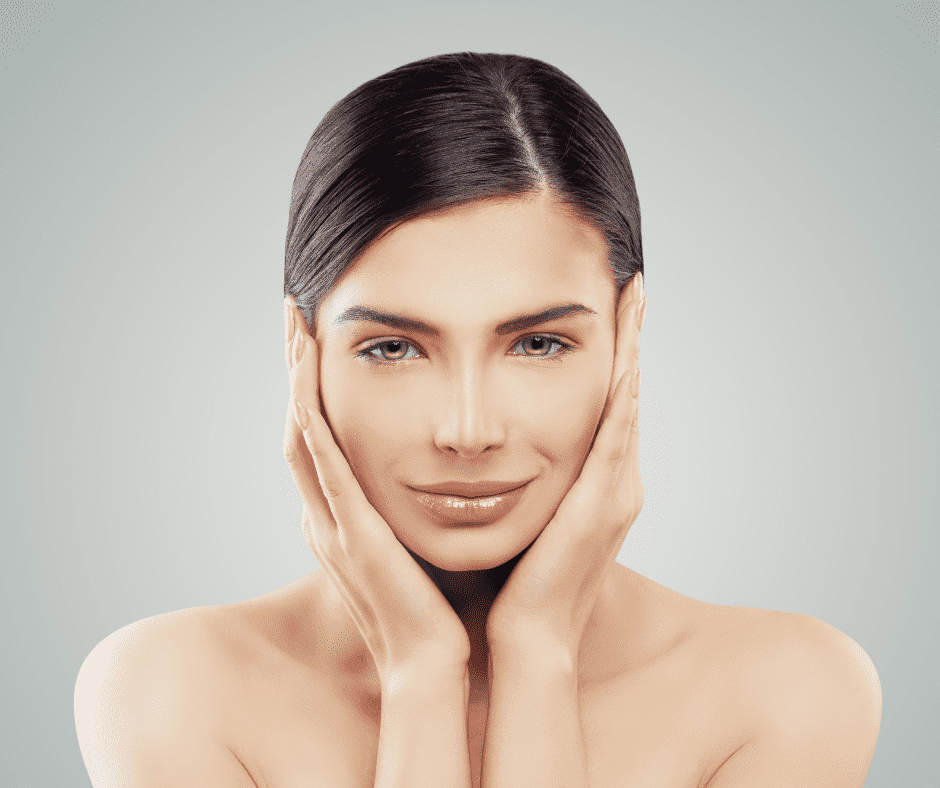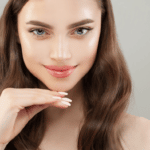Baltimore cosmetic surgery patients will be pleased to know that collagen induction therapy is an excellent way to perform rejuvenation of the skin of the face and also the entire body. It is different than CO2 laser therapy as the patients do not have to go to sleep for this. It can be done right in the office with topical anesthesia only. It does preserve the dermis. This can eventually preserve the epidermis, which avoids thinning of the skin. It does go through the epidermis to get to the dermis. The collagen induction therapy does puncture the epidermis with little needles in the hand-held device, produces minimal damage to the epidermis and does preserve it as much as possible. However, it does stimulate the dermis to undergo the wound healing cascade, which provides all of the benefits.
Furthermore, on histologic section you can see that the needle tracks from the CIT hand piece, goes through the epidermis into the papillary dermis and then a little bit into the reticular dermis, which does preserve the epidermis unlike carbon dioxide laser therapy, which gets rid of the entire dermis. This injury into the dermis does cause injury, which stimulates the skin to undergo the wound‑healing cascade causing releasing of growth factors and fibroblast proliferation. This is important for the collagen production.
The phase 2 is the tissue proliferation, which does involve fibroblast proliferation and deposition of collagen. The initial wound healing takes 15 minutes to several days, the phase 2 is about five days to eight weeks and phase 3 can take eight weeks to a year to year and a half and phase 3 does involve fibroplasia and tissue remodeling and vascular maturation where the type 3 collagen converts to type 1 collagen causing skin tightening. Histologic study also shows that after six months from percutaneous collagen induction therapy, you do see approximately 400% increase in collagen and elastin. This is documented in a well written paper by Fernandes in Oromaxillary and Facial Surgical Clinics of North America.
Collagen induction therapy is excellent for fine lines and wrinkles, acne scarring, tightening the skin after liposuction, stretch marks, scars, and hypertrophic burn scars. Collagen induction therapy your Baltimore plastic surgery expert can be combined with surgery for optimal results or it can be used alone for those not willing to have surgery. That is excellent for the entire body including the face, neck, arms, abdomen, and thighs. The fine lines between the breasts as well as the upper lip creases called the vertical lip lines or the smoker’s lines. For the technique of the collagen induction therapy the skin should be needled as densely as possible. The needles penetrate about 1.5-2 mm into the dermis. The skin then develops multiple micro bruises, which initiates the wound-healing cascade causing the outstanding release of growth factors that eventually leads to collagen production.
The patients can have a red and bruised look. It is important to shower and let the water wash off all the blood and ooze after the procedure. The procedure can be repeated a month later and best results are obtained by repeating the procedure three to four times. The results can last for several years depending on skin quality and maintenance of the skin, it is very important to use a vitamin A in the form of retinoic acid and vitamin C. It is also wonderful that any skin type and color can be treated with collagen induction therapy.
For contraindications, people who have not pretreated their skin with vitamin A should not do collagen induction therapy. It is not approved for patients that have active skin cancers, warts, solar keratoses or skin infection. It is also not good for those patients that have active acne or cold sores or on any blood thinners. If you are in chemotherapy or high doses of steroids it is also not good. If you have diabetes, it needs to be well controlled and again caution should be used in patients that form keloids. The results for Baltimore plastic surgery patients can be outstanding in the vertical lines, the upper lips, skin tightening of the arms, and even of the abdominal area.




